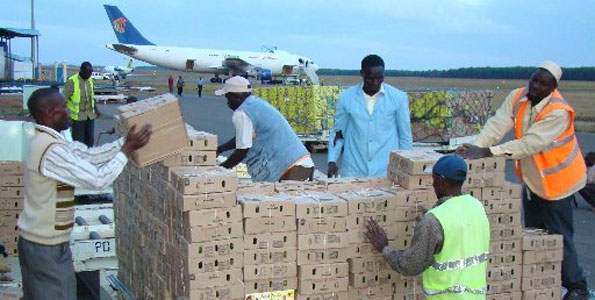Exports tipped to hit US$7,4bn in 2022
ZIMBABWE’S exports are projected to grow by 15,5 percent this year to US$7,4 billion buoyed by strong growth in mineral shipments due to increased production and higher global commodity prices.
The mining sector is one of the country’s key sectors presently contributing to foreign direct investment, 83 percent to exports, 19 percent to Government revenues, and two percent to direct formal employment.
Under President Mnangagwa’s administration, Zimbabwe launched a roadmap for a US$12 billion mining economy by 2030 in line with the thrust of the National Development Strategy 1 (NDS 1).
NDS 1 is a five-year economic development programme through 2025, prioritising 14 key areas, including economic growth and stability, human capital development, environmental protection as well as food security and nutrition.
The US$12 billion milestone is anchored on increasing production through expansion projects, reopening of closed mines as well as opening new projects.
By the end of this year, the mining sector is expected to have grown to a US$8 billion industry from US$5,3 billion last year and US$2,7 billion in 2018.
In the 2023 National Budget presented last Thursday, Finance and Economic Development Minister Professor Mthuli Ncube indicated that during the first half of this year merchandise exports grew by 32,5 percent to US$3,5 billion compared to US$2,6 billion in the corresponding period last year.
This was largely attributable to increases in minerals, agriculture and manufactured exports.
“To year end, merchandise exports are projected to increase by 15,5 percent, from US$6,4 billion in 2021, to US$7,4 billion in 2022, underpinned by mineral export growth on account of increased production and higher mineral commodity prices,” he said.
However, next year, merchandise exports are projected to marginally decrease by 2,4 percent to US$7,2 billion on account of anticipated lower mineral exports receipts, as the global economy slows down and the fall in commodity prices.
Zimbabwe’s merchandise exports are largely agricultural produce such as tobacco, macadamia nuts, citrus, and hides, as well as gold, Platinum Group Metals, chrome, diamond and nickel, manufactured products like sugar, cigarettes, wood and timber, metal products, and electricals.
The geopolitical developments in Eastern Europe where Russia is conducting a special military operation in Ukraine has adversely affected global supply chains including that of commodities like minerals on the international market.
“The base metal price index surged in the second and third quarters of 2022, before retreating due to slowing down global economic growth, with prices expected to fall to 5,5 percent on average in 2022, and decreasing by a further 12 percent in 2023. Risks to the outlook are balanced, as investors weigh potential supply reductions by European smelters amid higher energy costs and weakening global demand.
“Precious metal prices are expected to decline moderately, by 0,9 percent in 2022 and by an additional 0,6 percent in 2023.
“Softened demand and higher interest rates have weakened gold prices, with the prices of silver and platinum declining, owing to a slowdown in industrial activity,” said Prof Ncube.
In the 2023 fiscal policy statement, Prof Ncube highlighted that merchandise imports increased by 18,5 percent to US$3,8 billion during the first half of this year, up from US$3,2 billion in 2021, driven mainly by increases in fuel, machinery and raw material imports.
The country’s merchandise imports are mainly maize, wheat, rice, electricity, fuel, raw materials, manufactured goods, and machinery, commercial vehicles, passenger motor vehicles, oils and fats.
“Imports are projected to close 2022 at US$8,2 billion 14,6 percent up from US$7,2 billion in 2021. As the economy expands, so will the capacity to absorb imports that feed into the production processes, whilst fuel imports are expected to grow on the back of rising crude oil prices.
“Merchandise imports are projected to increase further to US$8,4 billion in 2023 in line with expected domestic economic growth.
“Enhanced import substitution through local production of products such as wheat and soya beans are envisaged to dampen imports,” he said.
In his 2022 mid term monetary policy statement Reserve Bank of Zimbabwe (RBZ) governor, Dr John Mangudya, said the country’s exports were expected to close the year 2022 at US$7,35 billion, above 2023 target set in the National Export Strategy.
These positive statistics are as a result of the Second Republic’s efforts to restore the country’s economy by focusing on increased trade, investment and international re-engagement.
National trade development and promotion body, ZimTrade, has also been intensifying activities to link Zimbabwean exporters with markets on the continent and beyond.-herald.cl.zw









